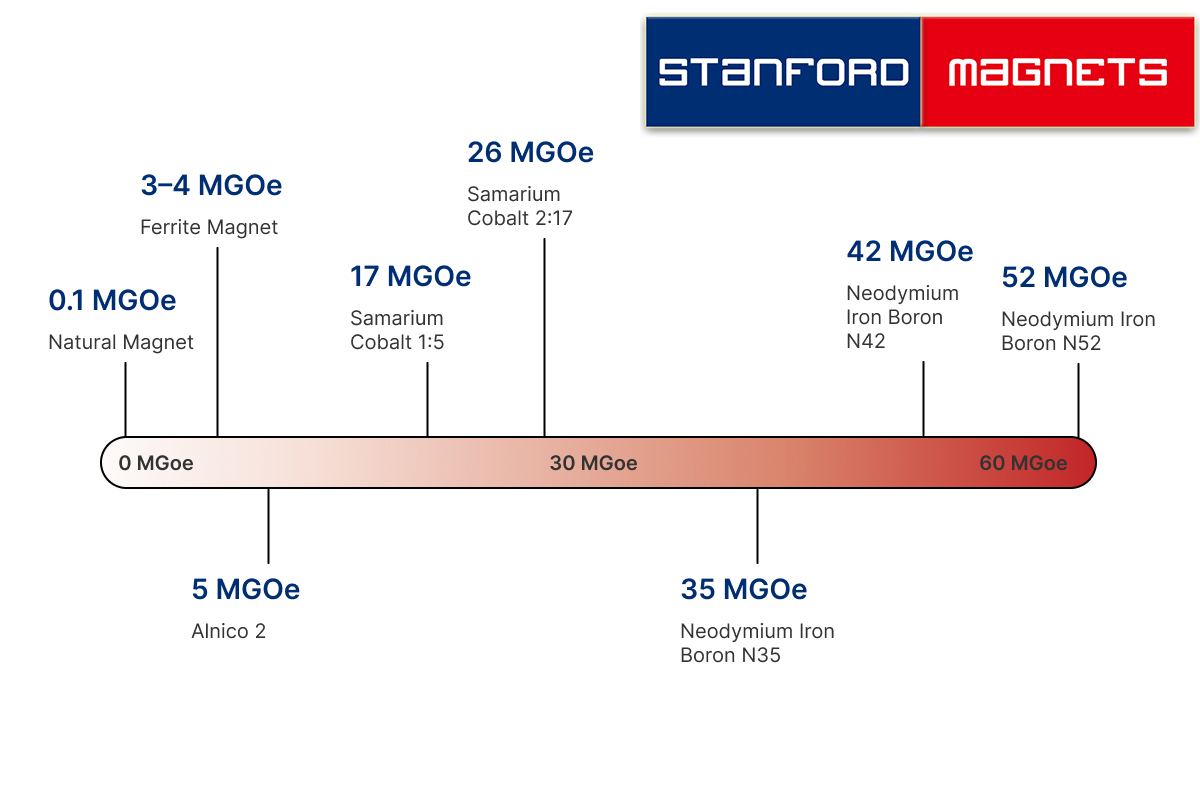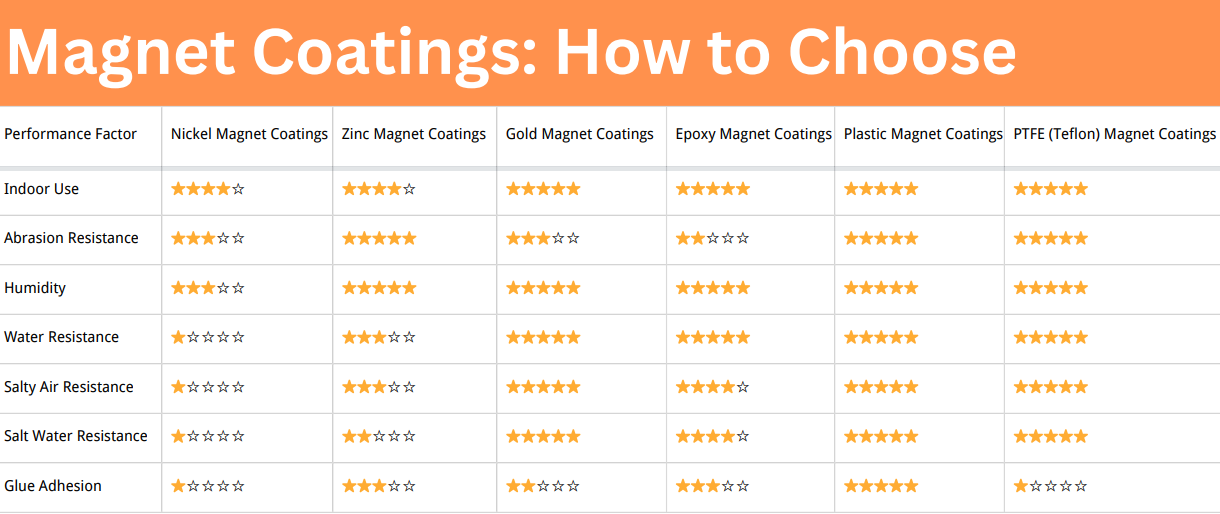All about Magnetic Strength
Introduction
Magnetic strength is a topic that often raises questions and confusion. What exactly does it mean for a magnet to be “strong”? How do we measure that strength, and why do some magnets perform better than others? We will break down these questions step by step, helping you understand the true meaning of magnetic strength, how it’s measured, the factors that influence it, and how different types of magnets compare in real-world applications.

What Is Magnetic Strength?
Magnetic strength, also known as magnetic field strength or flux density, measures the intensity of a magnetic field at a specific point. It indicates the force the field applies to moving charges or magnetic materials.
It has two closely related concepts:
- Magnetic Field Strength (H) – This refers to the intensity of the external field applied to a material, measured in amperes per meter (A/m).
- Magnetic Flux Density (B) – Also called magnetic induction, it’s the total magnetic effect, including contributions from the material itself, measured in tesla (T) or gauss (G) (1 T = 10,000 G).
- Maximum Energy Product (MGOe) – Short for Mega Gauss Oersted, MGOe is a unit that measures a magnet's maximum energy density. It’s commonly used to compare the strength of permanent magnets. A higher MGOe value means the magnet can store more magnetic energy. For example, neodymium magnets typically range from 30 to 52 MGOe, making them among the strongest commercially available.
In practical applications, when someone talks about a magnet being "strong," they’re usually referring to the surface magnetic field (in gauss or tesla) or the pull force (in pounds or kilograms), which tells us how much weight the magnet can hold under ideal conditions. Here, Stanford Magnets offers pull force calculator.
How Is Magnetic Strength Measured?
Magnetic strength can be measured in several ways. Here are the specific methods and tools employed.
To measure magnetic flux density, a gaussmeter or teslameter is calibrated and its sensor is placed near the magnet’s surface to record the magnetic field in gauss or tesla. Pull force is measured with a pull force gauge by attaching the magnet to a flat ferromagnetic surface, then gradually applying force until the magnet detaches; the maximum force recorded shows its holding strength. For energy product (BHmax), a vibrating sample magnetometer is used to apply varying magnetic fields to the magnet and generate a hysteresis curve, which indicates the magnet’s maximum energy capacity.
Further reading: How to Measure the Strength of a Magnet?
Which Factor Affects Magnetic Strength?
Several factors influence a magnet's strength:
- Material Type
Neodymium (NdFeB) magnets are the strongest commercially available. Samarium Cobalt (SmCo) offers high strength with better temperature resistance. Alnico and ceramic (ferrite) magnets are weaker but more temperature- and corrosion-resistant.
- Size and Shape
Larger magnets produce stronger fields. Geometry affects field distribution: disc and ring magnets often concentrate fields better than block magnets. You can turn to Stanford Magnets for different shapes of permanent magnets.
- Temperature
Neodymium magnets lose strength above 80°C (176°F) and may become demagnetized. Samarium cobalt retains magnetism up to 350°C (662°F). Ferrite magnets are stable up to 250°C (482°F) but weaker overall.
- Distance from Magnet
Magnetic field strength drops rapidly with distance—following an inverse cube law. At twice the distance, strength is 1/8 as much.
- Environment
Moisture, dirt, and oxidation can degrade performance. For instance, uncoated neodymium corrodes quickly in humid environments.
- Magnet Aging and Handling
Physical impact, exposure to opposing magnetic fields, and repeated heating/cooling cycles can weaken magnets over time.
Comparing Magnetic Strength of Everyday Magnets
|
Type |
Max Energy Product (BHmax) |
Surface Field (Tesla) |
Max Working Temperature (°C) |
|
Neo N35 |
~35 MGOe |
~0.4 T |
80–150 |
|
Neo N42 |
~42 MGOe |
~0.5 T |
80–150 |
|
Neo N52 |
~52 MGOe |
~0.6 T |
80–150 |
|
SmCo 1:5 |
~17 MGOe |
~0.3 T |
250–350 |
|
SmCo 2:17 |
~26 MGOe |
~0.4 T |
250–350 |
|
Alnico 2 |
~5 MGOe |
~0.1 T |
~540 |
|
Alnico 3 |
~7 MGOe |
~0.15 T |
~540 |
|
Alnico 4 |
~8 MGOe |
~0.18 T |
~540 |
|
Alnico 5 |
~9 MGOe |
~0.2 T |
~540 |
|
Alnico 8 |
~7 MGOe |
~0.15 T |
~540 |
|
Ferrite |
3–4 MGOe |
~0.1 T |
~250 |
|
Flexible |
<1 MGOe |
~0.01–0.03 T |
~60 |
|
Injection Molded |
4–10 MGOe |
~0.05–0.15 T |
80–150 |
|
Electromagnet |
Variable |
Up to several Tesla |
Depends on cooling |
|
Natural (Magnetite) |
~0.1 MGOe |
~0.05 T |
Ambient |
Conclusion
Magnetic strength is more than just a number—it's a combination of material science, design, and environmental factors. By understanding how it’s measured and what affects it, you can choose the right magnet for your needs with confidence. Whether you're holding a motor together, sorting scrap metal, or building a magnetic latch, the right strength makes all the difference. For more technical support, please check Stanford Magnets.














